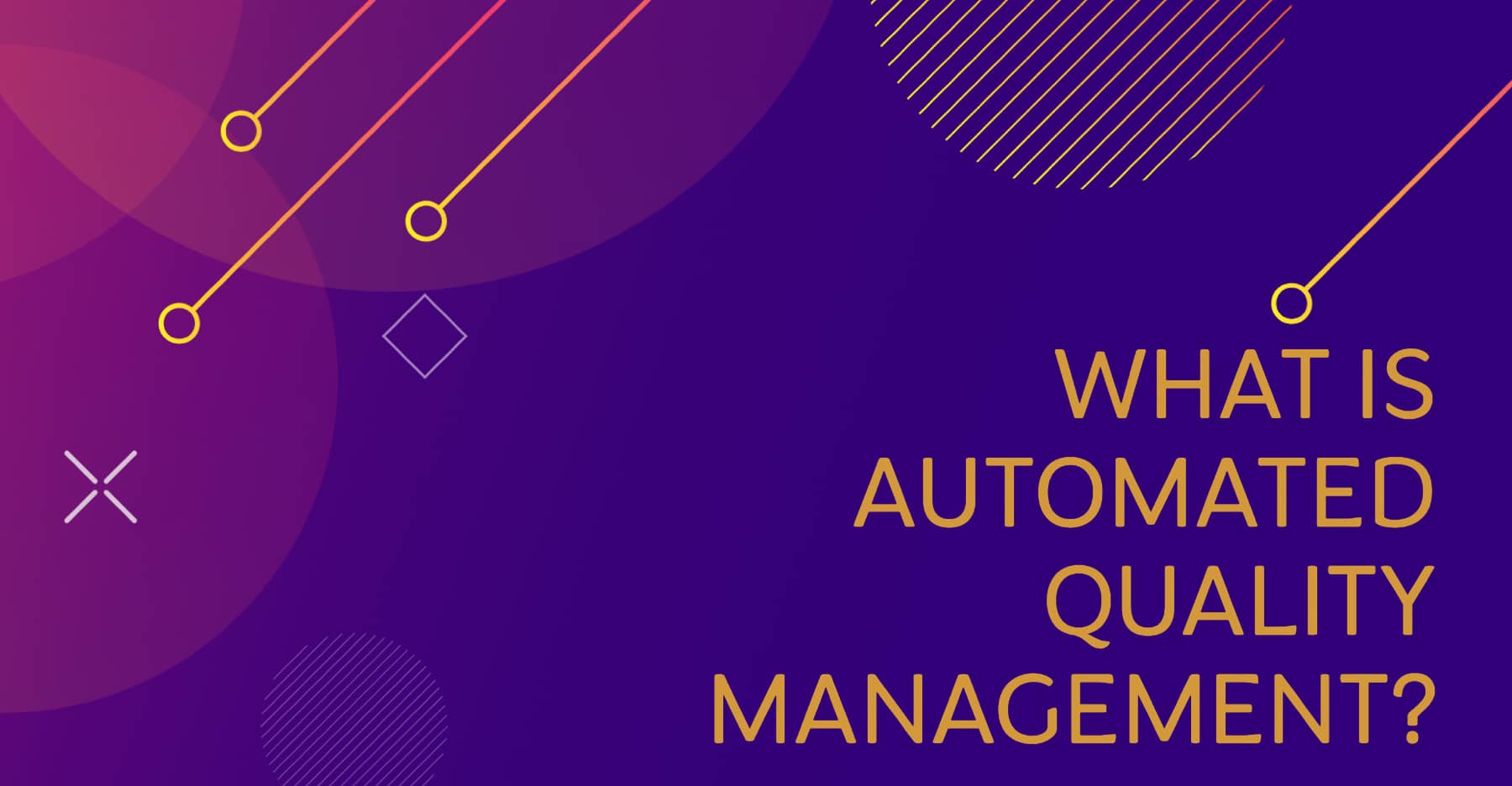Contact centers play a crucial role in delivering exceptional customer experiences. However, ensuring consistent quality and optimized workflows can be challenging, especially when relying on manual quality management processes. This is where Automated Quality Management (AQM) comes into play, revolutionizing the way contact centers monitor and enhance service quality.
What is Automated Quality Management?
Automated Quality Management (AQM) is an integrated system that automates the entire quality management process in a contact center. It leverages artificial intelligence (AI) and machine learning to evaluate 100% of customer interactions, providing comprehensive insights into agent performance and identifying areas for improvement.
Unlike manual tracking, which is limited to a small percentage of calls, AQM solutions analyze every single customer interaction across various channels, including voice and chat. This enables managers to gain a complete understanding of agent performance, compliance adherence, and customer sentiment.
Benefits of Implementing AQM in Contact Centers
Implementing AQM in contact centers offers a wide range of benefits that can significantly improve overall performance and customer satisfaction. Let's explore some of the key advantages:
Enhanced Agent Performance and Customer Satisfaction
AQM provides real-time evaluations and scorecards, enabling managers to identify areas for improvement and provide targeted coaching.
By analyzing 100% of customer interactions, AQM offers valuable insights into customer sentiment and satisfaction levels.
Improved Efficiency and Cost-Effectiveness
AQM automates tedious and time-consuming manual tasks, allowing managers to focus on strategic decision-making.
With AQM, contact centers can allocate resources more effectively, reducing unnecessary expenses.
Streamlined Workflows and Quality Monitoring
AQM streamlines contact center workflows by automating processes such as call recording, transcription, and evaluation.
It enables monitoring of quality across multiple communication channels, ensuring consistency and compliance with industry standards.
Objective and Data-Driven Performance Evaluation
AQM eliminates human bias in performance evaluations, providing objective and consistent assessments.
It offers data-driven insights into agent performance, enabling managers to make informed decisions and provide personalized coaching.
Compliance and ISO Standards Adherence
AQM helps contact centers maintain compliance with industry regulations and standards, such as ISO.
It tracks interactions and agent performance, ensuring adherence to scripts, disclosures, and quality guidelines.

Key Components of Automated Quality Management
To fully harness the power of AQM, it's essential to understand its key components. Here are the core elements of an effective AQM system:
Component | Description |
|---|---|
Artificial Intelligence (AI) | AI algorithms analyze customer interactions, identify patterns, and provide actionable insights. |
Machine Learning | Machine learning models continuously improve the accuracy of evaluations and predictions over time. |
Automation | AQM automates various tasks, including call recording, transcription, evaluation, and coaching assignment. |
Analytics and Reporting | Advanced analytics and reporting features provide detailed performance metrics and trends. |
Integration | AQM systems integrate seamlessly with existing contact center technologies, such as CRM and helpdesk software. |
Implementing AQM Successfully
To successfully implement AQM in your contact center, follow these best practices:
Define Clear Quality Standards
Establish well-defined quality standards and KPIs aligned with your business goals.
Communicate these standards to all stakeholders, including agents, supervisors, and managers.
Involve Stakeholders in the Process
Engage agents, supervisors, and managers in the AQM implementation process.
Seek their input and feedback to ensure buy-in and smooth adoption.
Select the Right AQM Tool
Evaluate AQM solutions based on your contact center's specific needs and requirements.
Consider factors such as functionality, ease of use, integration capabilities, and scalability.
Provide Training and Support
Offer comprehensive training to agents, supervisors, and managers on how to use the AQM system effectively.
Provide ongoing support and resources to ensure successful adoption and utilization.
Continuously Monitor and Optimize
Regularly review AQM insights and performance metrics to identify areas for improvement.
Continuously refine your quality standards and processes based on data-driven insights.

Real-World Success Stories
Many contact centers have already experienced significant improvements by implementing AQM. Let's take a look at some real-world success stories:
XYZ Corporation
Implemented AQM across multiple contact center locations
Achieved a 25% increase in customer satisfaction scores within 6 months
Reduced average handle time by 15% through targeted agent coaching
ABC Company
Automated quality evaluations for 100% of customer interactions
Identified and resolved compliance issues, avoiding potential legal penalties
Improved agent retention rates by 20% through personalized coaching and development programs
These success stories demonstrate the tangible benefits that AQM can bring to contact centers, from enhancing customer experience to optimizing operations and ensuring compliance.
Automated Quality Management (AQM) offers a powerful solution to streamline operations, improve agent performance, and deliver exceptional customer experiences.
By leveraging AI, machine learning, and automation, AQM provides comprehensive insights into agent performance, customer sentiment, and compliance adherence. It enables contact centers to make data-driven decisions, provide targeted coaching, and continuously optimize their processes.
Implementing AQM successfully requires careful planning, stakeholder involvement, and the right technology partner. By following best practices and continuously monitoring and refining your AQM system, you can unlock the full potential of your contact center and stay ahead in the competitive landscape.
Embrace the power of Automated Quality Management and take your contact center performance to new heights. With AQM, you can deliver exceptional customer experiences, boost agent productivity, and drive business growth.


